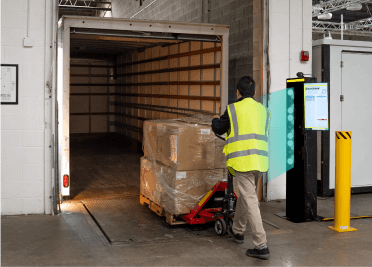Here in 2014, it’s unlikely that the acronym “RFID” has escaped your attention. You may not know exactly what it is, but you’ve probably heard that they put it in dogs, cats, credit cards, automobiles, planes, luggage, packages, and a whole host of other things. You might have overheard it mentioned at your company once or twice, maybe it’s even already being used in your workplace in some fashion, but what is it?
RFID stands for Radio Frequency IDentification. It seems like the 21st century equivalent of bar codes but actually has its roots in 1940’s Cold War espionage. Leon Theremin (as in the inventor of the theremin, the world’s first electronic instrument), working for the USSR, created a device that could use simple diaphragms and resonators to transmit audio information, which allowed his Soviet overseers to eavesdrop on their enemies in a very rudimentary fashion. The RFID tags we use today are significantly more advanced.
The most common setup is for a package (or pet, credit card, car, etc) to contain a RFID tag, this tag is a very small chip which is encoded with information about the package such as the contents, delivery location, point of origin, or other identifying information. When the package, and its accompanying tag, pass a RFID reader, the reader records that information and passes it on a computer where that information is used to track the current location of the package, where it needs to be routed to get to its destination, to record inventory and so on. Unlike traditional inventory tracking methods such as barcodes, the reader does not require line of sight to the tag. Which means that a reader positioned at the dock door to a warehouse can record all of the crates or pallets that are delivered or sent out from that warehouse without anyone having to stop and scan the barcodes. Simply push the pallet through the door and the data is collected.
What this means for companies is that inventory can be tracked more quickly and efficiently than ever. Many have already converted their warehouses and storage facilities to RFID so that they possess real time information on everything that comes and goes.
Sounds pretty good, doesn’t it? You might already be thinking that this is something you need to look into. Luckily, AbeTech has your back!
RFID tags are already being included in many products from major manufacturers, (you’ll have to check with your suppliers to find out if they are amongst them), but without a reader, they’re just a tiny grain-of-rice sized lump of silicon. The needs of every company are different, but one reader which can suit a variety of situations is the Zebra FX9500 Fixed RFID Reader. Simply put, this thing is the just the device you need to get started on making your logistics tracking easy.
With 4- or 8-port models available, this one reader can collect information from multiple RFID scanners. So whether your warehouse has a single dock door or many, the FX9500 will make it simple. Rugged and sealed against the elements, it’s designed to take on the tough environments and temperature fluctuations you commonly see in dock bays around the world. The high sensitivity means that information from your shipments and deliveries is collected faster and more accurately than ever, as well as helping maintain that efficiency in locations where radio frequencies can sometimes have difficulty being read, such as where there is a lot of metal or liquids.
Contact AbeTech today and find out if RFID is the right tech upgrade for your facility.
Check out this awesome video of the inventor of RFID, Leon Theremin, playing the instrument which bore his name. Also known as “that weird sound effect used in every spooky movie made from 1950 to 2000.” Have you ever played the theremin yourself? What was it like? Let us know in the comments!









